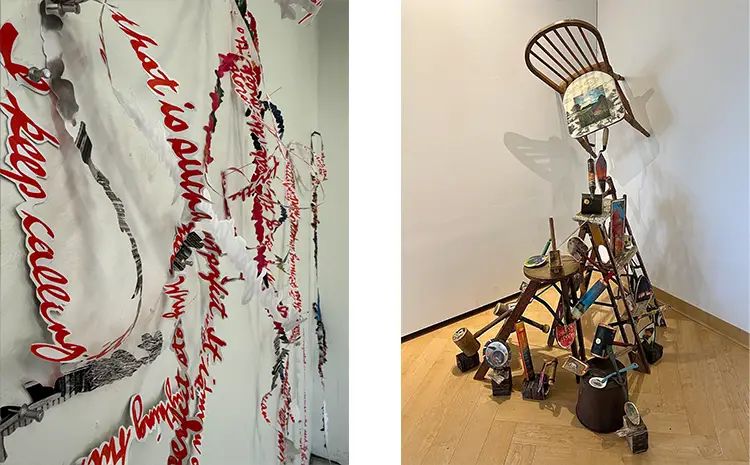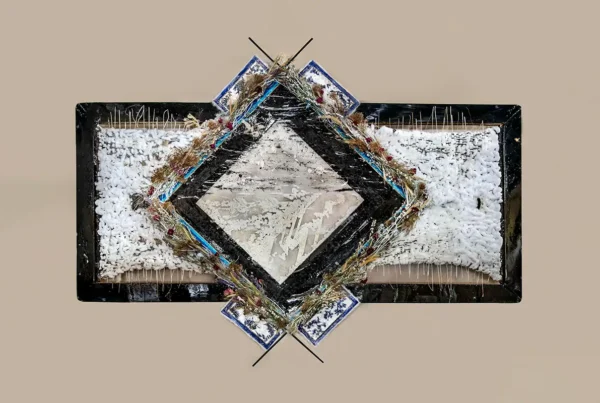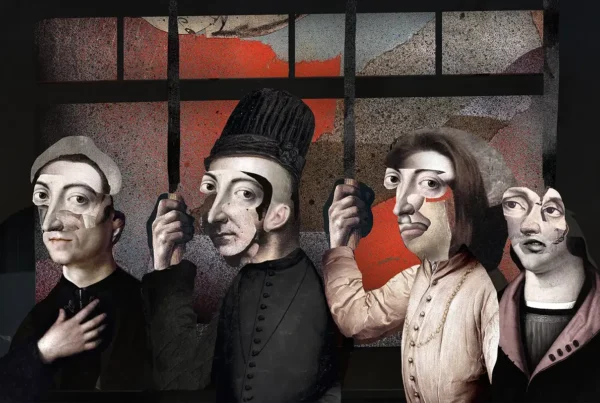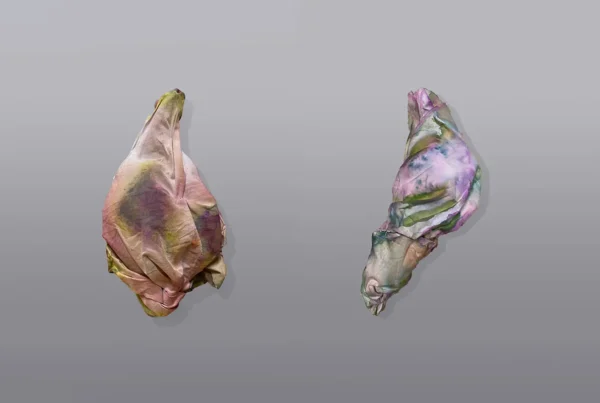“My work is conceptual and process driven, juxtaposing representational imagery and recognizable objects and materials to express the story beneath.”
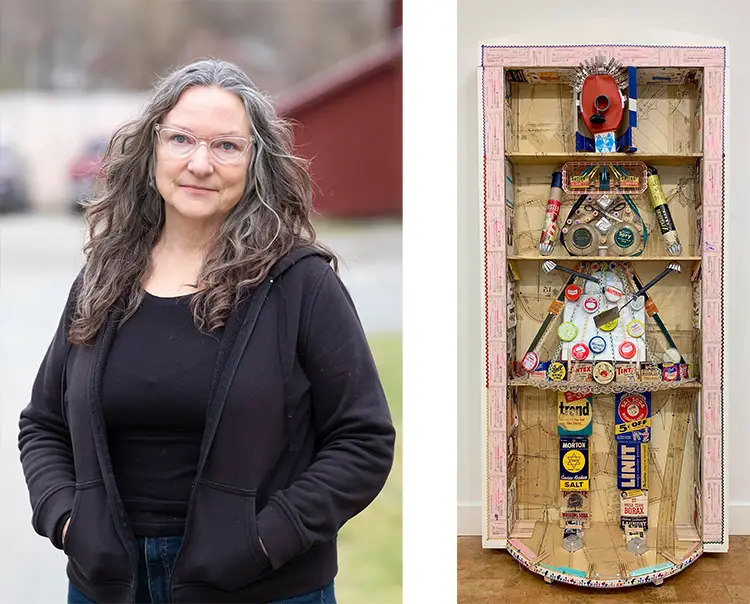
Rooted in Place, Driven by Curiosity
Liz Barick Fall stands as an artist whose creative practice bridges the tactile with the conceptual, forging connections between materiality, memory, and meaning. Based in Michigan, Fall’s artistic voice resonates deeply with the landscapes, cultures, and communities of the Midwest—a region that not only shapes her worldview but frequently appears within her artistic narratives. With a background that intertwines fine art training and metalsmithing, she has cultivated a practice that defies the boundaries of medium, integrating sculpture, photography, assemblage, and installation into a cohesive and thoughtful body of work.
Her educational journey began at the University of Michigan, where she completed a Bachelor of Fine Arts, followed by a Master of Fine Arts in metalsmithing from Cranbrook Academy of Art. Despite extensive travel across the United States and abroad, Fall’s lifelong residence in Michigan continues to inform both the subject matter and material choices in her art. The juxtaposition of industrial grit with serene natural environments—characteristic of the Great Lakes region—echoes throughout her creative output, embedding a sense of place into each piece. Whether referencing the stillness of wooded paths or the resilience of urban spaces, her work reflects a profound reverence for the environments that shape human experience.
From an early age, Fall was immersed in a world where art and culture were deeply valued. Raised by educator parents who filled their home with music and museum visits, she developed an instinctual appreciation for craftsmanship and construction. Influenced by her father’s inventive approach to building and fixing, she absorbed lessons in problem-solving and hands-on making. Although initially swayed by pragmatic expectations that led her away from artistic studies, Fall’s eventual return to art school marked a pivotal moment—one where passion and purpose aligned, setting her on the trajectory that continues to define her life’s work.
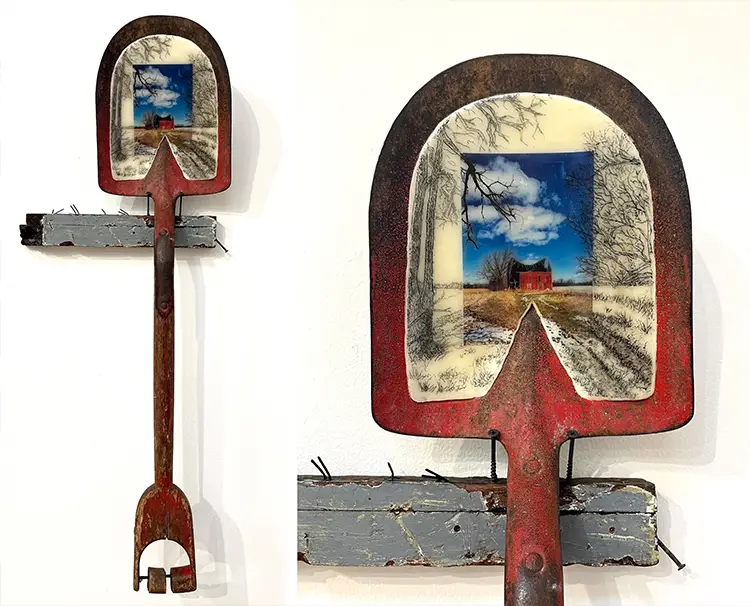
Liz Barick Fall: The Evolution of an Artistic Voice
For Fall, the path toward becoming a full-time artist was neither linear nor rushed but rather one marked by dedication, exploration, and the patience of lived experience. After earning her BFA, she immersed herself in creative-sector jobs before pursuing graduate studies with the goal of teaching art and advancing her studio practice. Balancing a variety of roles—including running her own production studio and teaching part-time—she eventually paused her career to focus on raising her four daughters, an experience that would later deepen the personal resonance of her work.
When the time came to re-engage with her artistic pursuits, Fall did so with renewed focus and clarity. She established a dedicated studio and gallery space, committing herself fully to her creative path. This return was not merely about making art but about embracing the fullness of her artistic identity. Her studio, meticulously organized and brimming with tools, equipment, and decades of collected materials, serves as a hub for experimentation across multiple mediums. Here, encaustic processes, photography, sculpture, and mixed media converge, allowing her to navigate a wide range of techniques with fluidity and intention.
At the core of Fall’s artistic process lies a commitment to conceptual exploration. Her works often interrogate the social frameworks and constructed environments that shape human lives, while also weaving in elements of nostalgia, memory, and the passage of time. Themes of environmental impact, consumer culture, patriarchal systems, and political unrest find expression through tangible objects and layered imagery. By integrating recognizable materials and familiar forms, she invites viewers to engage with complex ideas through the lens of everyday experience, making abstract concepts accessible and deeply personal.
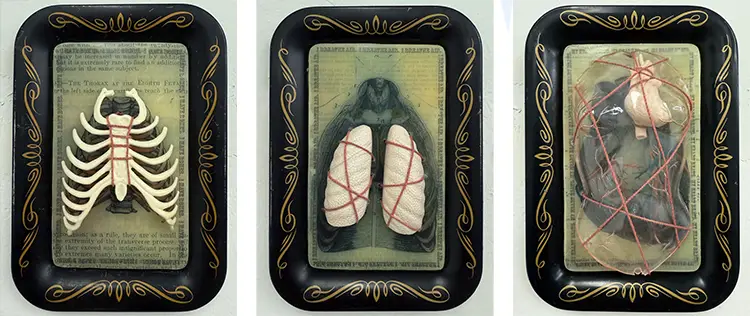
Memory, Material, and the Language of Objects
A defining characteristic of Fall’s artistic style is her ability to harmonize concept and craftsmanship, using materials not simply as aesthetic choices but as carriers of meaning. Her approach revolves around the thoughtful juxtaposition of objects and images, allowing each element to contribute to a broader narrative. Whether through the inclusion of vintage household items or the careful transfer of photographs onto three-dimensional surfaces, she constructs works that function as both physical artifacts and emotional touchstones.
This philosophy is perhaps most poignantly illustrated in several of her deeply personal pieces that honor familial connections. Among these are works composed exclusively from items sourced from her grandmother’s home—objects transformed into tributes that embody legacy and memory. One such piece, which now hangs in her own home, stands as a quiet testament to generational bonds. Another set, comprising four distinct artworks depicting her grandmother, mother, and herself as a child, holds future significance as she plans to pass one to each of her daughters, preserving this lineage of storytelling and remembrance.
Fall’s piece Monthly Moments of Zen offers another example of how her practice marries conceptual rigor with heartfelt reflection. Consisting of twelve handcrafted “trophies,” each representing a sunset photographed over the span of a year, the work transforms ephemeral moments into lasting relics. Each photograph is mounted on glass jars filled with materials collected from the woods and beaches where the images were taken, and each plaque is inscribed with precise details of time, place, and coordinates. These personal “trophies” stand in contrast to the traditional hunting trophies familiar to her Michigan upbringing—redefining the idea of commemoration through a lens of reverence for nature rather than conquest.
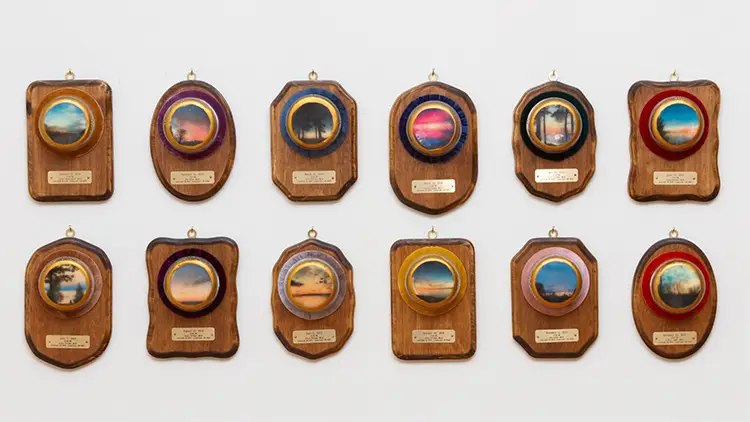
Liz Barick Fall: Expanding Horizons, Envisioning Immersion
Fall’s creative ambitions continue to push the boundaries of scale and viewer engagement. Among the projects she envisions bringing to life are immersive installations designed to envelop audiences within the thematic heart of her work. One such installation, now in the planning stages, draws from her long-standing series of “Relics”—assemblages that fuse vintage garden tools with photographic elements. Through this work, she aims to construct an environment saturated with the echoes of memory, evoking the feeling of navigating through the accumulated remnants of a lifetime.
Another project, emerging from a recent residency at the Vermont Studio Center, signals a new direction in her practice. This installation concept stems from stream-of-consciousness writings Fall composed in response to contemporary political turmoil. Transcribed in her own handwriting onto the reverse sides of unused photo transfers, the text is intricately cut into continuous chains with an X-Acto knife. When realized, these paper chains will fill the exhibition space, creating a labyrinthine structure where viewers walk through overlapping layers of words and images—symbolizing the fragmentation and discord of opposing viewpoints. The installation invites reflection on the ways in which communication becomes obscured amid political noise, offering an experiential metaphor for the complexities of dialogue in divided times.
Fall’s preference for three-dimensional expression remains the throughline in all her projects. While she has explored a wide array of materials and techniques throughout her career, it was the discovery of encaustic photo transfer methods that provided the key to integrating her love for photography into her sculptural work. This fusion of image and object has allowed her to cultivate a distinctive voice—one that honors both the physicality of materials and the intangible weight of memory, history, and social critique.
